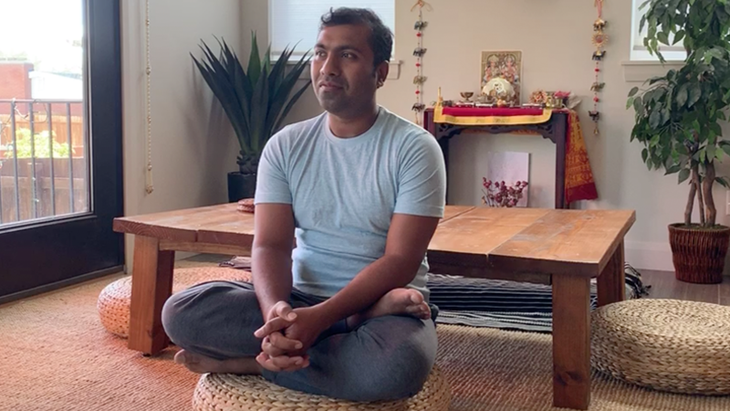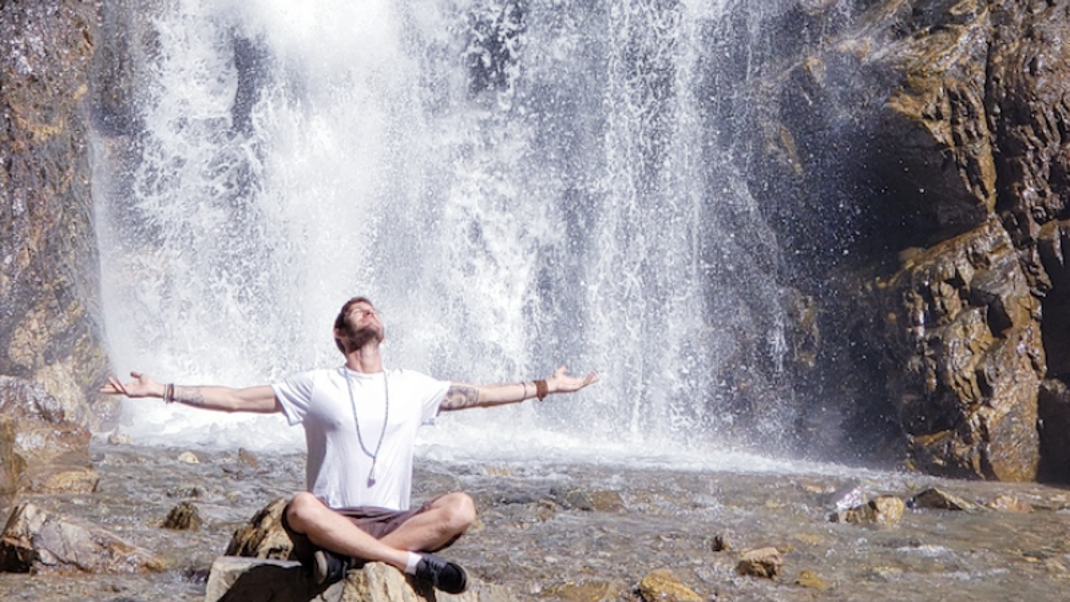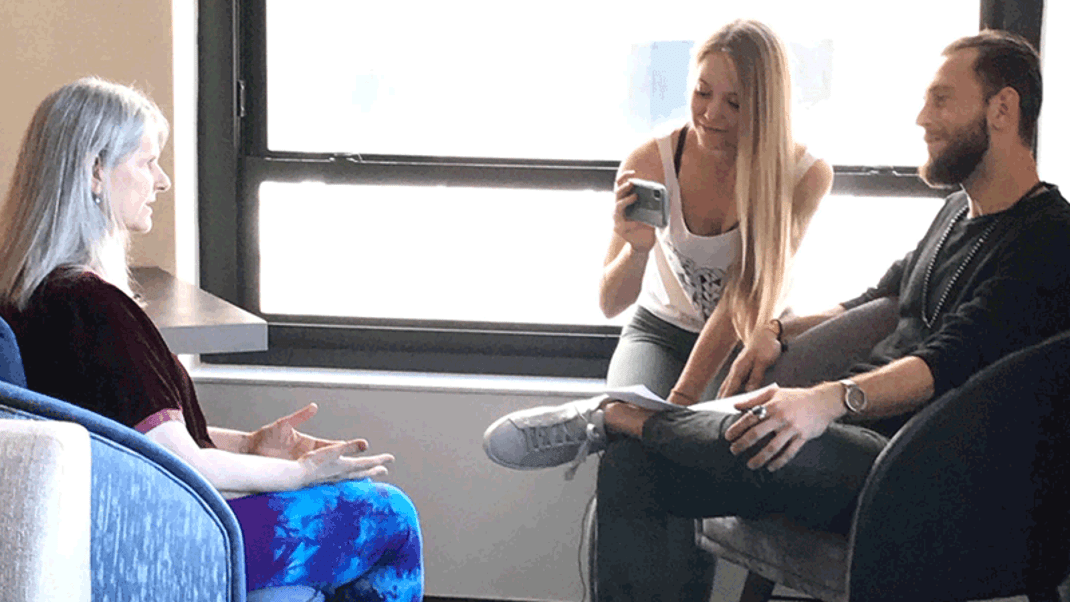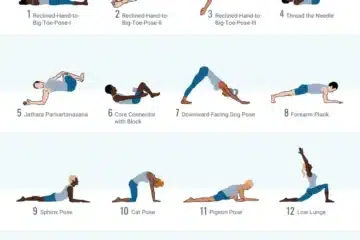We all know the benefits of yoga. So you found peace through yoga? So what? What does this mean for your day-to-day life, and how can you live a more peaceful existence? In this post, I’ll share with you three ways that practicing yoga has improved my everyday experience.
Before I dive into my experience with Yoga for People and Santosh Yoga Institute Santosh Maknikar in Salt Lake City, I have to share a short story about my spiritual teacher and guide, Priya Jain. It will all come full circle at the end, so, please, stay with me.
For about a year in 2014, I was homeless. (You can read more about that here.) I was living on a beach when a strange and synchronistic series of events transpired. I met a woman on the beach, who recommended that I visit Seventh Chakra Yoga, a Kundalini Yoga studio in Huntington Beach, California. I’d never even heard of Kundalini Yoga before. But a voice within—a whisper in my heart that was clear and firm—told me I had to go there. At the time I was completely confused about what I was going to do to get out of my situation, so receiving any intuitive guidance was a blessing. So, I listened and made my way to Seventh Chakra Yoga.
An Aura of Devotion
Walking up to the studio, I remember that my heart was racing, and I became intensely anxious. Then, as soon as I entered the space, I felt an undeniable shift of vibrational energy. I’d never experienced anything like it before. At the time, I definitely didn’t even have the vocabulary to describe this experience, but today I can say it felt like a forcefield, an energetic boundary that was subtle, gentle, and healing. This studio had the energy of a sacred temple in which you can feel the devotion permeating everything around you. It was a space where reverence for exploring the spirit was consistent in its efforts, and because of this, you feel something special, something otherworldly.
My heart slowed to a regular beat, and my anxiety vanished almost immediately. I felt calm and safe. Suddenly, all kinds of emotions washed over me. One part of me felt completely at peace while the other wanted to start bawling. At the front desk, I saw Priya, who owned and taught at the studio. She had the kindest eyes and most radiant energy. She seemed to emanate a special glow. Once my eyes locked with hers, I nearly collapsed to the ground and began sobbing and crying. So many trapped, confused emotions—like heartbreak, sorrow, guilt, and shame—suddenly released. Maybe I didn’t process my entire journey right then and there, as spiritual work operates in layers, but nonetheless, it was a catalyst for change. She walked over, gave me a maternal hug, and said, “Let’s talk, ya?” I collected myself and followed her into the meditation room, where we chatted for hours about life, existence, and how I was going to pick myself up from rock bottom.
In summary, this is how yoga found me. Priya took me under her wing, and that very day she opened up her classroom and allowed me to take free classes. Eventually, I started working at the studio, earning a steady paycheck, and training to teach. I began to understand that Priya’s generosity in sharing yoga, as she did with me, cultivated that beautiful feeling I experienced in her studio.
Everything Is Yoga
I felt a very similar feeling entering Santosh Maknikar’s home on the day we arrived in Salt Lake City. I was instantly at ease. Lauren and I were there to learn about the community he has cultivated, his nonprofit organization, Yoga for People, and how he lives a balanced lifestyle fit for a yogi. The moment I walked through his front door, I could feel the vibration of sadhana (daily, committed spiritual practice) within his walls. I could feel lightness and kindness. Later that afternoon, I complimented Santosh about the purity of the energy of his abode.
“It is not me,” he replied. “It is the yoga.”
 His humble presence, character, and words truly came from a place within, cultivated by his daily practice. In our previous interview with Richard Freeman and Mary Taylor, they expressed that there is never a time when we are off the mat; we are actually always practicing, connecting, and relating to other beings and to existence itself. Santosh expressed this same truth and philosophy.
His humble presence, character, and words truly came from a place within, cultivated by his daily practice. In our previous interview with Richard Freeman and Mary Taylor, they expressed that there is never a time when we are off the mat; we are actually always practicing, connecting, and relating to other beings and to existence itself. Santosh expressed this same truth and philosophy.
“I don’t know who came up with the idea of being off the mat when you practice yoga,” he said. “You are always practicing. Everything is yoga.”
I assumed that someone with this much wisdom, discipline, and integrity would be a full-time teacher. After all, many teachers in the West are turning Yoga into a career path and ditching corporate life; they say it doesn’t fit into their newfound spiritual paths. To our amazement, Santosh has a full-time job at a national financial institution. His ability to cultivate a lifestyle in which he has integrated his yoga service and corporate career inspired me. His day job is likely demanding, but his busyness isn’t an excuse. Instead, he uses his resources to give back to his community through yoga.
For example, Santosh transformed the basement of his divine home into a huge yoga studio, where locals join him for classes multiple times every week. In addition, he facilitates an intensive teacher training program that is roughly eight weeks long, and once a year he takes students to a retreat somewhere inspiring in the world.
Santosh aims to reach those who are underprivileged, including homeless populations and kids living in orphanages. In fact, each year he supports the education of up to 50 children in his hometown of Latur, India, located in the Maharashtra state. (He moved to the US in 2005.) As a way of meeting more people in his community, he founded Salt Lake City’s Downtown Yoga Festival, where the average price of admission is $20, making it accessible to all.
One powerful point Santosh drove home was how common it is for yogis to fall short of serving. We can all become distracted by our practices, and once we experience the healing, transcendental peace that comes with yoga, we stop there. We become comfortable. Instead, Santosh hopes that, once we experience a slice of stillness, we should find a way to share it with our community.
Whether we feed the homeless, volunteer at a shelter, or teach a free class at a recreational center, finding some way to give back to our community is paramount—and it doesn’t necessarily have to be in the form of teaching yoga. It’s just about contributing to the world and helping others.
We were both deeply moved by Santosh’s humility and reverence for the practice, along with the ways he continues to share it with his local community and beyond. It’s inspiring to witness how Santosh maintains a sense of grounding and practicality in day-to-day life, all while he remains deeply committed to spiritual development and yoga service.
There are two common threads linking Priya and Santosh: first, their commitments to their practices; and then through yoga, they have been reconditioned to be of service to their communities and those who enter their lives. They see everything entering their lives as a blessing and maintain open hearts as they uplift and inspire others. Thanks to teachers like Priya and Santosh, I am reminded to continue growing as a spiritual being, to pay it forward through random acts of kindness, and to focus on ways I can share yoga—not just in a classroom or on a mat, but in all its forms.
Conclusion:
So You Found Peace Through Yoga—Here’s Why the Practice Doesn’t Stop There So you found peace through yoga, but what happens when you get off your mat? Whether we feed the homeless, volunteer at a shelter, or teach free classes to our community; finding some way to give back is paramount.
It doesn’t necessarily have to be in the form of teaching yoga. Thanks to teachers like Priya and Santosh I am reminded that it’s just about contributing something meaningful so helping others becomes an integral part of my daily life.



